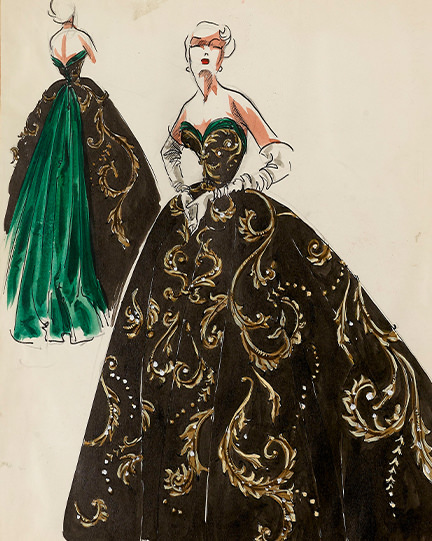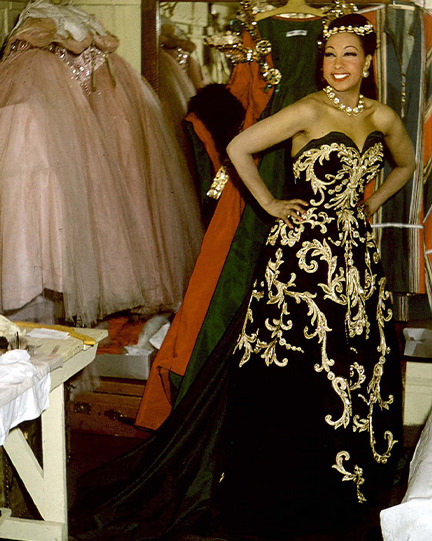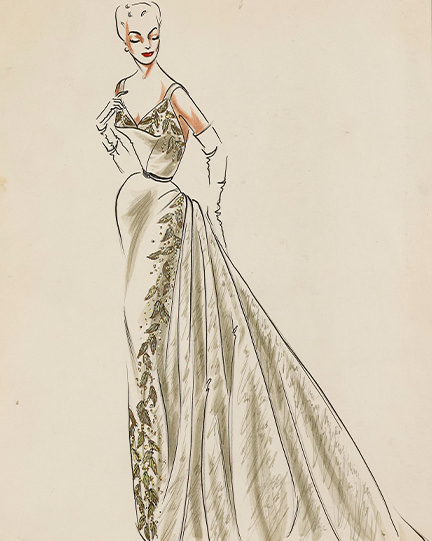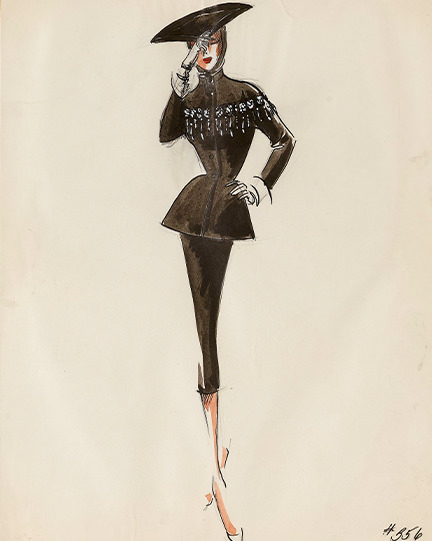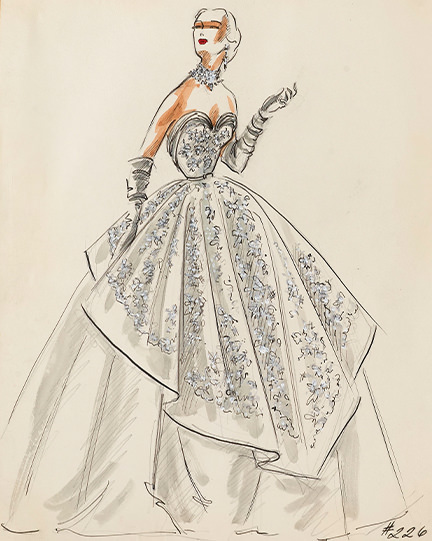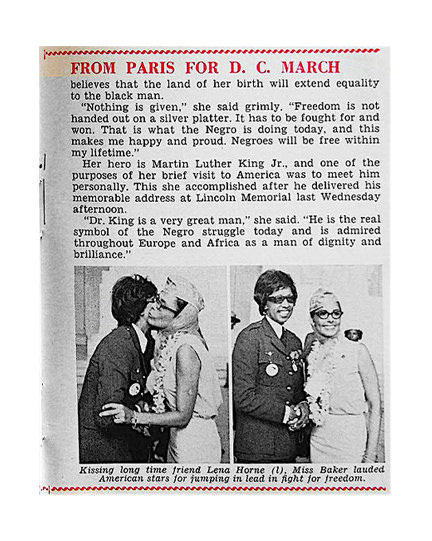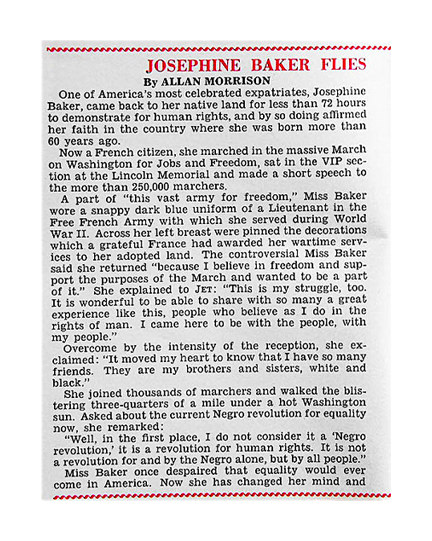JOSEPHINE BAKER:
SUPERSTAR,
WAR HERO, ACTIVIST
AND BALMAIN MUSE
SEASON 2, EPISODE 6:
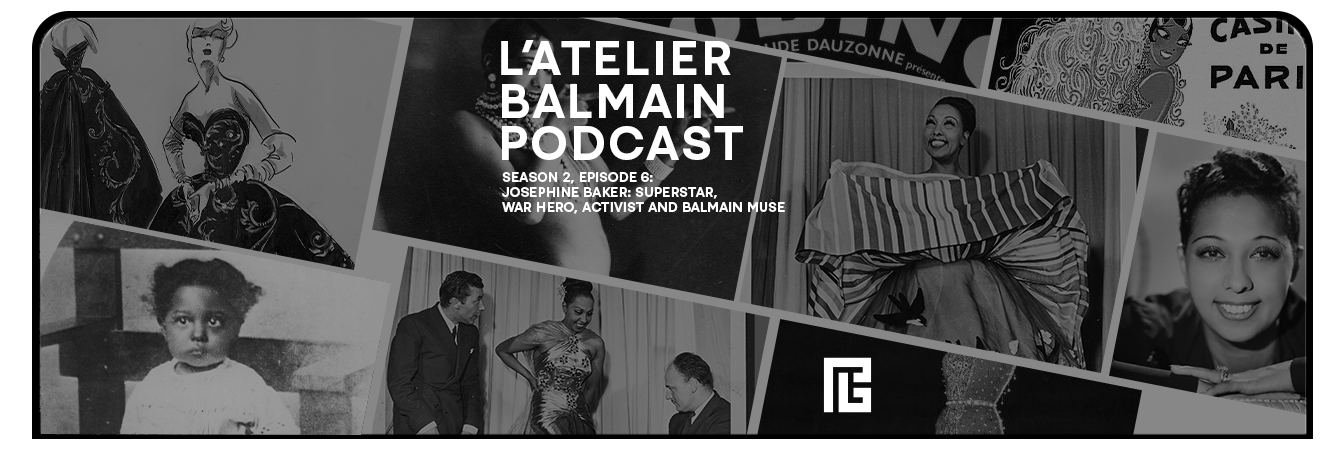
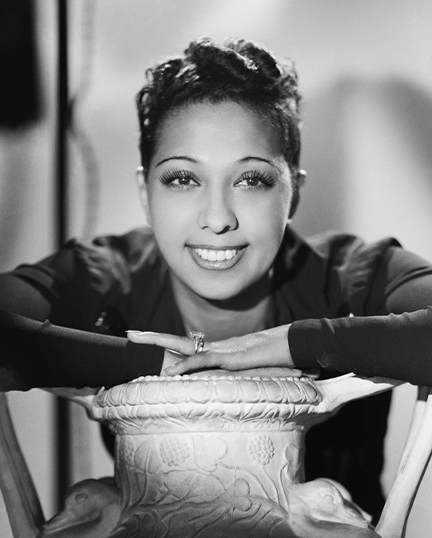
JOSEPHINE BAKER ENTERS THE PANTHEON
Paris’ Pantheon is the final resting place for a small handful of France’s most extraordinary statesmen, intellectuals, artists and heroes. Among the people buried inside the imposing mausoleum are remarkable literary figures like Victor Hugo, philosophers like Jean-Jacques Rousseau, inventors like Louis Braille (who invented the Braille alphabet), statesmen like Jean Monnet (who helped establish the forerunner of the European Union) and scientists like the Nobel laureates Pierre and Marie Curie.
Only 80 exceptional French citizens have preceded Josephine Baker into the Panthéon since 1790. Very few were foreign born and only a handful have been women. Josephine Baker is the first Black woman, the first American-born French citizen and the first entertainer to receive the French state’s ultimate honor. In November 2021 French President Macron welcomed her into the historic site with this stirring message: “Josephine Baker, you are entering into the Pantheon because, although you were born American, there is no greater French person than you.”
FREDA JOSEPHINE MCDONALD
In 1906, Freda Josephine McDonald was born in Saint Louis Missouri. She was the daughter of a teenage mother and she was raised in part by her grandmother, who had had been born into slavery. As a very young girl, Josephine Baker worked as a domestic and she later told some pretty horrible stories about the mistreatments that she had been forced to suffer. There are also stories about her having had to live on the street in the Saint Louis slums, sleeping in cardboard shelters and scrounging for food in garbage cans while she earned small change by dancing on street-corners. At the age of eleven, she witnessed the terrifying race riots in East St. Louis, as mobs of vigilante whites roamed the city, murdering inhabitants and setting fire to buildings. "One day," she wrote, "I realized that I was living in a country where I was afraid as a black. It was a country only for whites. Not for blacks."
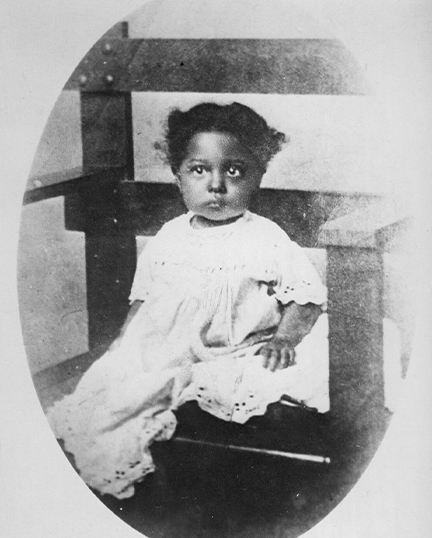
LA REVUE NEGRE
Socialite Caroline Dudley saw Harlem as "a land of banjos, pianos and the mechanical Victrola, gramophone, radio morning noon and night” as she was determined to bring that distinctive musical spirit to Paris, in the form of an all-Black revue that she named “La Revue Negre.” Josephine Baker arrived in Paris with the show—and it wasn’t long afterwards that she became the toast of the town.
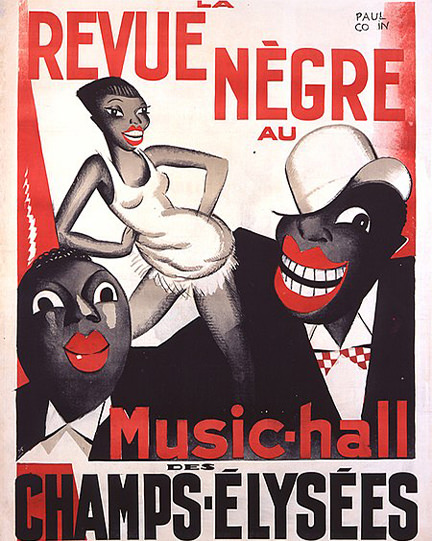
Early images and plot lines associated with Josephine Baker often relied on racial stereotypes that would be rejected today. For those who can speak French, Pap Ndiaye has some interesting takes on this issue. Ndiaye, who is now France’s Minister for Education, is also a very well-respected historian specializing in Black studies. During a 2019 podcast interview on France Culture radio, Ndiaye explained that he believed that Josephine Baker had actually worked to take control of the stereotypes that were part of her acts, dismissing and deriding them at the same time that she was exaggerating them. “It is this French colonial imaginary world which she will capture and which she will play with, obviously with many nods and much distance, because Josephine Baker is not someone to be fooled,” Mr. Ndiaye explains.
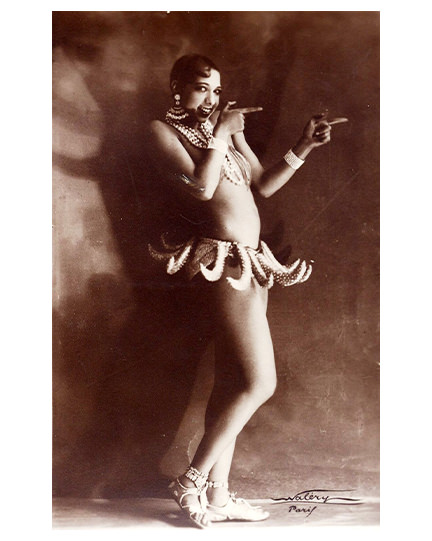
Ndiaye also underlines how important it is to remember how Baker must have felt when she arrived in France. In a 2021 interview with the AP, he points out that her new life in Paris allowed for radical changes for Baker: “When she arrived, she was first surprised like so many African Americans who settled in Paris at the same time ... at the absence of institutional racism. There was no segregation ... no lynching. There was the possibility to sit at a cafe and be served by a white waiter, the possibility to talk to white people, to have a romance with white people... That doesn’t mean that racism did not exist in France. But French racism has often been more subtle, not as brutal as the American forms of racism.”
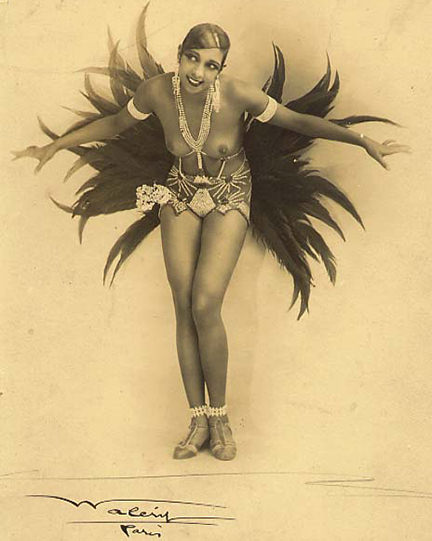
THE STAR OF THE PARIS STAGE
Josephine Baker starred on the stages of Paris’ most important music halls—The Folies Bergère, the Theatre des Champs Elysées, The Casino de Paris—wowing audiences with her beauty, moves, music and charm.
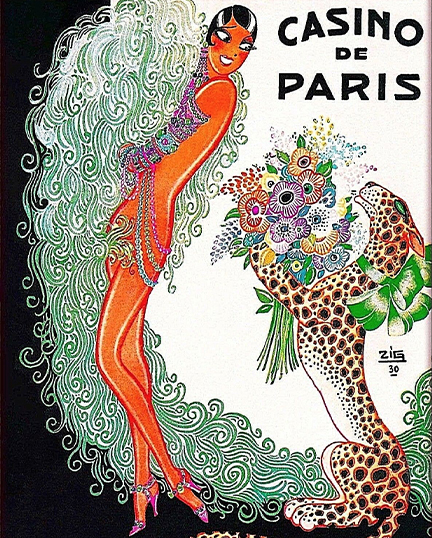
A GLOBAL SUPERSTAR
After conquering Paris, Josephine Baker set off on a two-year European tour, welcomed by adoring crowds at each of her stops. Here, we see her greeted by crowds of Dutch fans, as she arrives in The Hague, in 1928.
A MOVIE STAR
This YouTube clip shows one of Josephine Baker’s dance scene from the film ‘Princesse Tam Tam.’ Baker’s first film was 1927’s ‘Siren of the Tropics’—a silent film where she was cast as Papitou, who lived in the French West Indies and fell in love with a French man. She made two other films in the ‘30s—‘Zouzou’ and ‘Princesse Tam Tam’— and both were star vehicles for her. Her last movie was ‘Fausse Alerte,’ which finished filming just after the World War II had begun. Because of her film and music success across Europe, many consider Baker to be the world’s first Black global superstar.
A WAR HERO
After the Nazi occupation of France began, Josephine Baker joined the resistance. Her star power gave her instant access to diplomatic and aristocratic parties and her friendship with Miki Sawada, the wife of the Japanese ambassador to France, also got her through a lot of doors without any problems. She would work to charm people as she always had, using the conversations to collect information on Vichy policies and German-troop movements, jotting down whatever she learned on notes that she would pin to her underwear (she knew that she was too famous for anyone to think of strip searching her.) She also managed to smuggle documents and information to French spies by writing information on invisible ink on her sheet music.
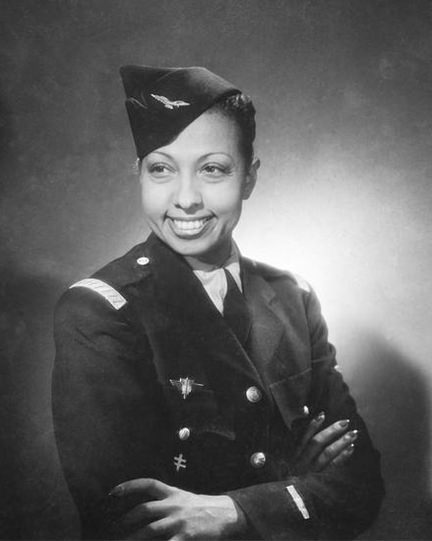
As an entertainer, Baker was still allowed to travel around Europe. In 1941, she and her entourage went on a tour through Spain to Lisbon and then on to Morocco, collecting information at the many parties she was invited to. She smuggled dozens of classified documents to British intelligence about German airfields, harbors and troop concentrations in the west coast of France.
For her incredible heroism, Josephine Baker was awarded the Resistance Medal by the French Committee of National Liberation, the Croix de Guerre by the French military, and she was named a Chevalier of the Légion d'honneur by General Charles de Gaulle.
ENTERTAINING THE TROOPS
In Morocco, after a miscarriage, Baker became so ill with an infection that she had to have a hysterectomy. She then developed peritonitis and sepsis. Once she recovered, she began touring to entertain British, French and American soldiers in North Africa—but she refused to perform for any troops that were segregated.
POST-WAR
Critics noted that Josephine Baker had a new gravitas after the war ended. And, of course, after her wartime heroism, she was loved by the French public even more than before the war. She returned to all the big clubs in Paris —and, as we can see from the house archives, this is when the new young star of Post-War Parisian Couture, Pierre Balmain, began dressing her for her performances.
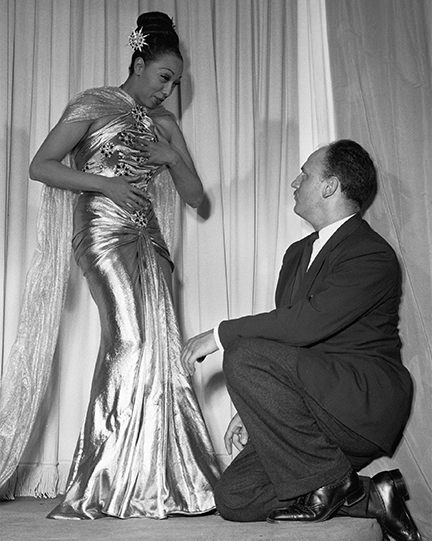
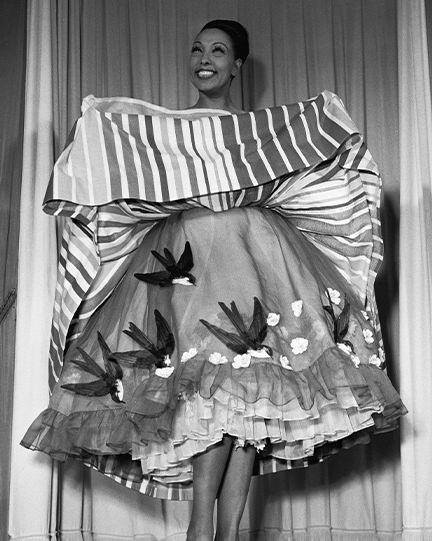
The photo above shows Pierre Balmain fitting Josephine Baker in a special Balmain golden couture gown that she wore during her performances. Below that, you can see Baker in another special Balmain design that the artist wore in 1951 when singing “Vendeuse des Quatre Saisons” (“Four Seasons Saleswoman”). The colorful design relied on four organdy petticoats, the first embroidered with flowers (spring), the second with wheat (summer), the third with grapes (autumn), and the forth with holly (winter).
1 / 2
Pierre Balmain created several other special couture designs for Josephine Baker. Above, Baker is photographed backstage in a 1951 Balmain gown. The second image shows Balmain's original sketch for Baker’s special gown.
1 / 3
Balmain’s rich archives make very clear that Pierre Balmain crafted several other beautiful couture designs for Josephine Baker. Here are three sketches of Balmain designs from the 1950s, created for the Baker's film and stage performances.
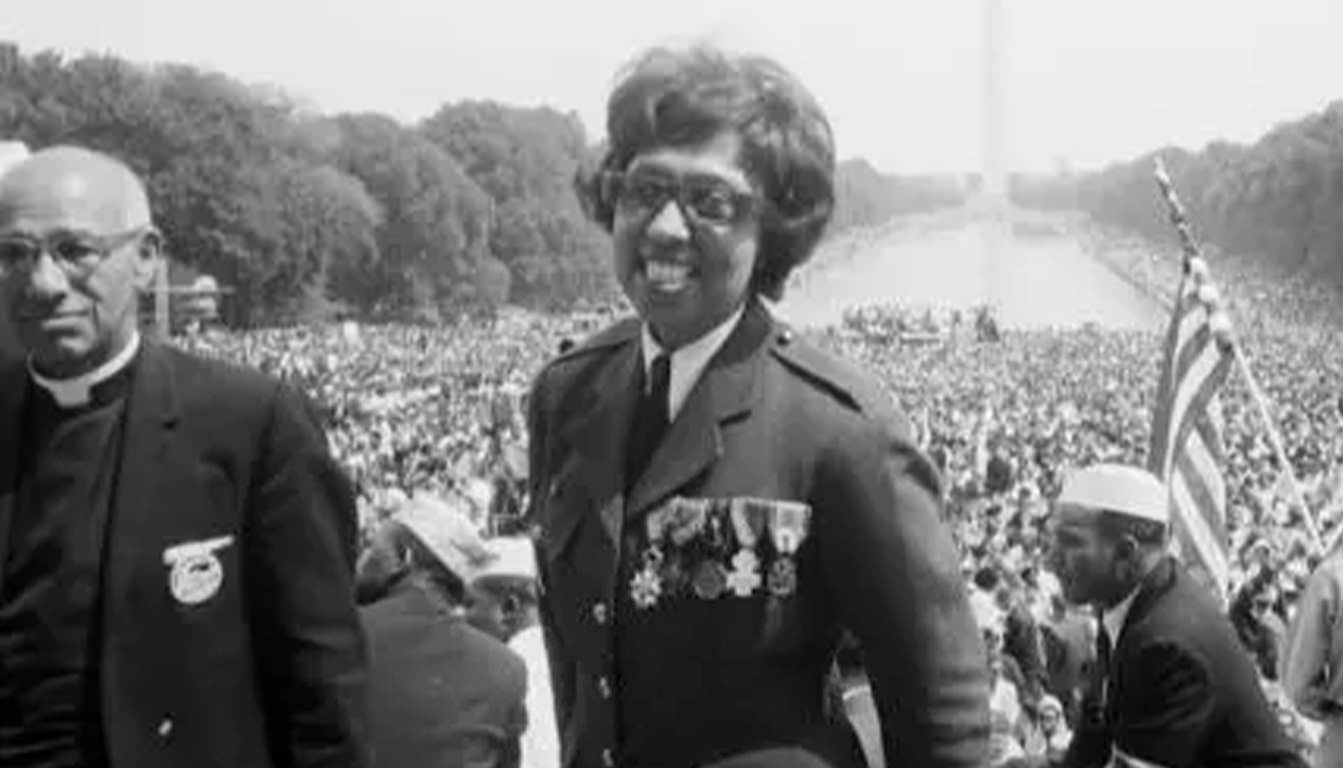
FIGHTING FOR CIVIL RIGHTS
Josephine Baker joined the crowds of the famous March on Washington demanding civil rights. On August 28, 1963, Josephine Baker—wearing her French Army uniform—addressed the crowd gathered at the Lincoln Memorial.
1 / 2
Below is an excerpt from Josephine Baker’s speech on the March on Washington:
“I am not a young woman now, friends. My life is behind me. There is not too much fire burning inside me. And before it goes out, I want you to use what is left to light that fire in you. So that you can carry on, and so that you can do those things that I have done. Then, when my fires have burned out, and I go where we all go someday, I can be happy.
You know I have always taken the rocky path. I never took the easy one, but as I get older, and as I knew I had the power and the strength, I took that rocky path, and I tried to smooth it out a little. I wanted to make it easier for you. I want you to have a chance at what I had. But I do not want you to have to run away to get it. And mothers and fathers, if it is too late for you, think of your children. Make it safe here so they do not have to run away, for I want for you and your children what I had.”
Above, an article from Jet Magazine highlighted Baker's trip to the USA to participate in the March on Washington.
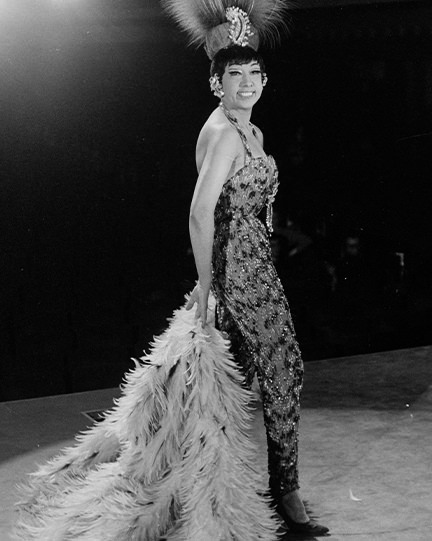
"JOSEPHINE BAKER KNOWS HOW TO MAKE AN ENTRANCE"
In 1973, Josephine Baker gave a sold-out performance at Carnegie Hall entitled “Josephine Baker and Her International Revue.” The New York Times’ very favorable review began with a description of Baker’s incredible flair:
"Josephine Baker knows how to make an entrance. The American‐born singer and dancer, who celebrated her 67th birthday on Sunday, brought a full house at Carnegie Hall to its feet cheering and applauding Tuesday evening merely by stepping into a spotlight wearing a spangled body‐stocking that left no doubt about the slim, trim, youthful lines of her figure, topped by an outrageously towering headdress of flamingo‐colored plumes that was as tall as she was herself (“My Eiffel Tower,” she called it)”
Pierre Balmain’s designs for Josephine Baker definitely helped the artist make those incredible entrances. The photo above shows an ensemble that Baker wore during her show at Paris’ legendary Olympia theatre in the 1960s.
And Balmain’s designs helped guarantee that Baker left a lasting impression, as well. The sleek black velvet gown that Josephine Baker is photographed wearing below was created by Pierre Balmain for the artist’s 1951 tour. It was actually one part of a luxurious Balmain ensemble: Baker would first appear onstage with a perfectly tailored Balmain black velvet jacket that sported an impressive white ermine collar. During her performance, she would remove the Balmain jacket to reveal the elegant gown.
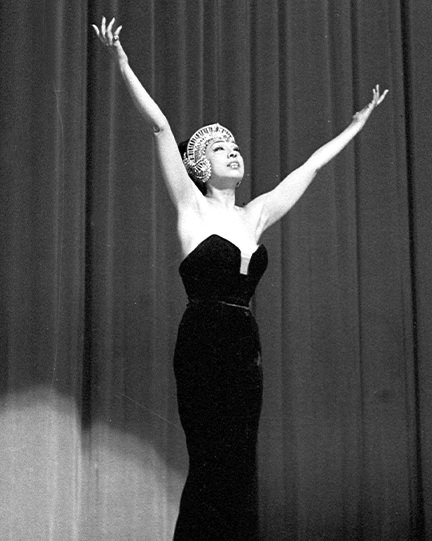
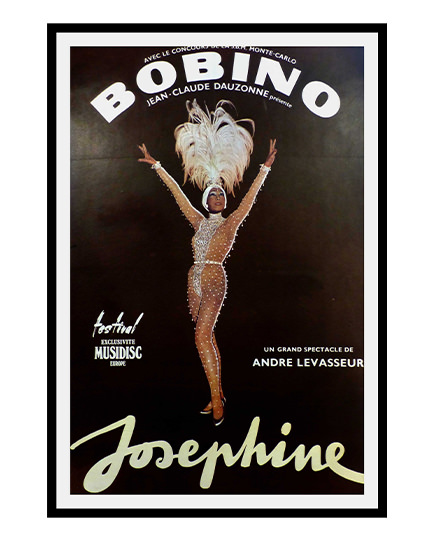
THE FINAL SHOW
In April of 1975, Josephine Baker opened a retrospective show at the Bobino in Paris, which looked back at her 50 years of incredible successes. Baker had not had a show in Paris since 1959—but as she told the press, “there’s no way I can finish my career somewhere else!” The sold-out opening night must have been incredible — among the stars in the audience that evening were Princess Grace, Alain Delon, Sophia Loren, Mick Jagger, Jeanne Moreau, Shirley Bassey, Diana Ross and Liza Minnelli. And, of course, Pierre Balmain also attended the premiere. The headlines were unanimous in their praise and the president of France, Valéry Giscard d'Estaing noted that Baker was owed “the gratitude of France, whose heart has so often beat in unison with hers.
Just a few days after her opening night triumph at the Bobino, Baker suffered a cerebral hemorrhage. She was rushed to Paris’ hôpital de la Salpêtrière, where she passed away on April 12, 1975. During her funeral procession, Parisians lined the streets to pay their final respects. At Paris’ famous Madeleine church, many of the same celebrities, royals and politicians who had attended her Bobino premiere just a few days earlier were seated in the pews. Since she was both a cultural and resistance hero, the French government honored Josephine Baker with a 21-gun salute, making her the first American woman to receive French military honors.
Credits:
01 Photo of Josephine Baker in 1940; Source: RMN (Réunion des musées nationaux), Studio Harcourt, Paris
02: Video of Josephine Baker entering the Pantheon; France 24 English, November 2021- 03: Childhood photo of Josephine Baker in 1908 from Wikipedia Commons.
- 04: The Revue Negre Poster: Wikipedia Commons, Paul Colin
05: Photo of Josephine Baker in 1927, wearing her iconic banana skirt in the Folies Bergère show "Un Vent de Folie": photo by Lucien Walery, Wikipedia Commons - 06: A 1927 Photo of Josephine Baker from La Revue des Revues; Wikipedia Commons, Fernande
- 07: A poster for Josephine Baker’s 1930 show at the Casino de Paris: Wikipedia Commons
- 08: A 1928 Video shows Josephine Baker being welcomed by crowds in The Hague, Netherlands during her European tour: Netherlands Institute for Sound and Vision; Wikipedia Commons
- 09: In this YouTube Video, Josephine Baker dances in the "Ahé ! la Conga" scene from ‘Princess Tam Tam’ (Edmond T. Gréville, 1935)
- 10: This 1948 Photo shows Josephine Baker in her French Military Uniform, 1948; RMN (Réunion des musées nationaux), Studio Harcourt, Paris
11: During World War II, Josephine Baker entertains French troops with her iconic “J’ai Deux Amours.” 12: A photo from the Balmain archives shows Pierre Balmain fitting Josephine Baker in a special Balmain gown. ©Balmain 13: A 1951 photograph shows Josephine Baker wearing a Balmain creation for her performance of the song “Vendeuse des Quatre Saisons” (“Four Seasons Saleswoman”)—the colorful design had four organdy petticoats, the first embroidered with flowers (spring), the second with wheat (summer), the third with grapes (autumn), and the forth with holly (winter). ©Balmain
- 14: A 1951 photo of Josephine Baker backstage, wearing a Balmain couture gown; Photo: © Roger-Viollet / Roger-Viollet
15: The Balmain sketch for the gown that Josephine Baker was wearing in the Roger-Viollet photo. - 16: From the Balmain house archives: Pierre Balmain sketches for special 1950s Balmain couture creations for Josephine Baker
17: A 1963 Photo shows Josephine Baker on the steps of the Lincoln Memorial during the historic March On Washington. - 18: A 1963 article from Jet Magazine highlighted Baker’s trip to the USA to participate in Martin Luther King’s March on Washington.
19: Josephine Baker wearing a special Balmain creation for her 1964 performance at Paris’ legendary Olympia theatre © BHVP / Roger-Viollet. 20: Photo of a Josephine Baker performance in 1951, with the artist wearing a Balmain couture gown ©SIPA 21: A poster from Josephine Baker’s 1975 retrospective show at Paris’ Bobino Theatre.
